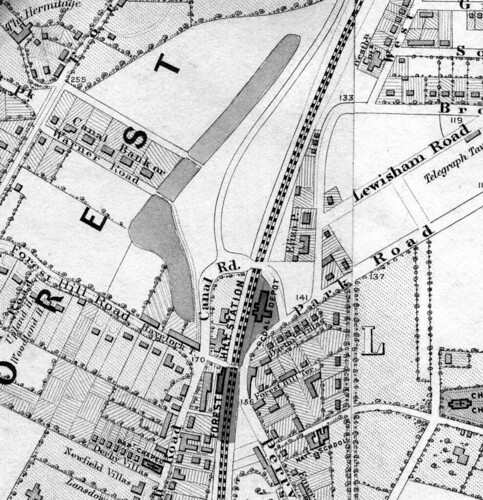I wouldn't trust that map above the line of Honour Oak Park for several reasons:
1) The pond-like remnant of the Croydon Canal is not continuous at that point.
2) It does not line up with the canal remnants below Honour Oak Park.
3) Honor Oak Park was a newly laid road, and the canal remains were being used for recreation.
It looks like that little pond may have been created after the canal was drained. Also, if you insist on the canal being wider at the top of the lock staircase based solely on that later map then the width of your superimposition has been exagerated at this point, and needs to be condensed down. Personally, I would stick to the evidence from the 2 maps I've provided from the time of the canal + illustrations of the canal at the Honor Oak Park junction; it did not widen here.
I don't know how accurate that 1862 Stanford map really is...

I've always thought Davids Road followed the towpath of the canal, but it seems it might have been in the bed of the canal (not just the shops). Anyone got a scan of the 1863 Os map showing the Davids Road stretch of the canal? Another possibility is that remnants of the canal evolved to become wider after it was closed. I'm going to compare with the 1843 map...










